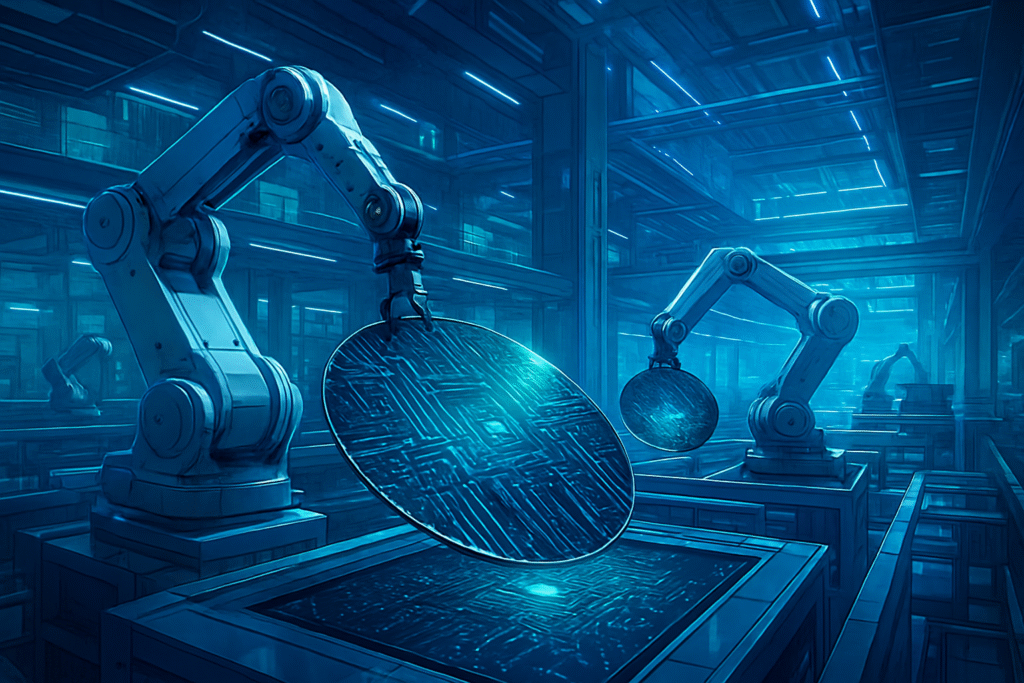
The ambition to revitalize domestic semiconductor manufacturing in the United States faces an arduous journey, particularly for new entrants like Substrate. While government initiatives aim to re-shore chip production, the path to establishing state-of-the-art fabrication facilities (fabs) is fraught with a formidable array of financial, operational, and human capital obstacles. These immediate and significant challenges threaten to derail even the most innovative ventures, highlighting the deep-seated complexities of the global semiconductor ecosystem and the immense difficulty of competing with established, decades-old supply chains.
The vision of new companies bringing cutting-edge chip production to American soil is a potent one, promising economic growth, national security, and technological independence. However, the reality involves navigating colossal capital requirements, protracted construction timelines, a critical shortage of skilled labor, and intricate global supply chain dependencies. For a startup, these hurdles are amplified, demanding not just groundbreaking technology but also unprecedented resilience and access to vast resources to overcome the inherent inertia of an industry built on decades of specialized expertise and infrastructure concentrated overseas.
The Technical Gauntlet: Unpacking Fab Establishment Complexities
Establishing a modern semiconductor fab is a feat of engineering and logistical mastery, pushing the boundaries of precision manufacturing. For new companies, the technical challenges are multifaceted, starting with the sheer scale of investment required. A single, state-of-the-art fab can demand an investment upwards of $10 billion to $20 billion, encompassing not only vast cleanroom facilities but also highly specialized equipment. For instance, advanced lithography machines, critical for etching circuit patterns onto silicon wafers, can cost up to $130 million each. New players must contend with these astronomical costs, which are typically borne by established giants with deep pockets and existing revenue streams.
The technical specifications for a new fab are incredibly stringent. Cleanrooms must maintain ISO Class 1 or lower standards, meaning fewer than 10 particles of 0.1 micrometers or larger per cubic meter of air – an environment thousands of times cleaner than a surgical operating room. Achieving and maintaining this level of purity requires sophisticated air filtration systems, specialized materials, and rigorous protocols. Moreover, the manufacturing process itself involves thousands of precise steps, from chemical vapor deposition and etching to ion implantation and metallization, each requiring absolute control over temperature, pressure, and chemical composition. Yield management, the process of maximizing the percentage of functional chips from each wafer, is an ongoing technical battle that can take years to optimize, directly impacting profitability.
New companies like Substrate, reportedly exploring novel approaches such as particle acceleration for lithography, face an even steeper climb. While such innovations could theoretically disrupt the dominance of existing technologies (like ASML (AMS:ASML) Holding N.V.'s extreme ultraviolet (EUV) lithography), they introduce an entirely new set of technical risks and validation requirements. Unlike established players who incrementally refine proven processes, a new entrant with a revolutionary technology must not only build a fab but also simultaneously industrialize an unproven manufacturing paradigm. This requires developing an entirely new ecosystem of compatible materials, equipment, and expertise, a stark contrast to the existing, mature supply chains that support conventional chipmaking. Initial reactions from the broader AI research and semiconductor community to such radical departures are often a mix of cautious optimism and skepticism, given the immense capital and time historically required to bring any new fab technology to fruition.
Competitive Pressures and Market Realities for Innovators
The establishment of new semiconductor fabs in the U.S. carries significant implications for a wide array of companies, from burgeoning startups to entrenched tech giants. For new companies like Substrate, the ability to successfully navigate the immense hurdles of fab construction and operation could position them as critical players in a re-shored domestic supply chain. However, the competitive landscape is dominated by titans such as Intel (NASDAQ: INTC), Taiwan Semiconductor Manufacturing Company (TSMC) (NYSE: TSM), and Samsung (KRX:005930), all of whom are also investing heavily in U.S. fabrication capabilities, often with substantial government incentives. These established players benefit from decades of experience, existing intellectual property, vast financial resources, and deeply integrated global supply chains, making direct competition incredibly challenging for a newcomer.
The competitive implications for major AI labs and tech companies are profound. A robust domestic chip manufacturing base could reduce reliance on overseas production, mitigating geopolitical risks and supply chain vulnerabilities that have plagued industries in recent years. Companies reliant on advanced semiconductors, from NVIDIA (NASDAQ: NVDA) and Advanced Micro Devices (NASDAQ: AMD) to Apple (NASDAQ: AAPL) and Google (NASDAQ: GOOGL), stand to benefit from more resilient and potentially faster access to cutting-edge chips. However, for new fab entrants, the challenge lies in attracting these major customers who typically prefer the reliability, proven yields, and cost-effectiveness offered by established foundries. Disrupting existing product or service supply chains requires not just a viable alternative, but one that offers a compelling advantage in performance, cost, or specialization.
Market positioning for a new fab company in the U.S. necessitates a clear strategic advantage. This could involve specializing in niche technologies, high-security chips for defense, or developing processes that are uniquely suited for emerging AI hardware. However, without the scale of a TSMC or Intel, achieving cost parity is nearly impossible, as the semiconductor industry thrives on economies of scale. Strategic advantages might therefore hinge on superior performance for specific applications, faster turnaround times for prototyping, or a completely novel manufacturing approach that significantly reduces power consumption or increases chip density. The potential disruption to existing services would come if a new entrant could offer a truly differentiated product or a more secure supply chain, but the path to achieving such differentiation while simultaneously building a multi-billion-dollar facility is exceptionally arduous.
The Broader AI Landscape and Geopolitical Imperatives
The drive to establish new semiconductor factories in the United States, particularly by novel players, fits squarely within the broader AI landscape and ongoing geopolitical shifts. The insatiable demand for advanced AI chips, essential for everything from large language models to autonomous systems, has underscored the strategic importance of semiconductor manufacturing. The concentration of leading-edge fab capacity in East Asia has become a significant concern for Western nations, prompting initiatives like the U.S. CHIPS and Science Act. This act aims to incentivize domestic production, viewing it not just as an economic endeavor but as a matter of national security and technological sovereignty. The success or failure of new companies like Substrate in this environment will be a bellwether for the effectiveness of such policies.
The impacts of successful new fab establishments would be far-reaching. A more diversified and resilient global semiconductor supply chain could alleviate future chip shortages, stabilize pricing, and foster greater innovation by providing more options for chip design companies. For the AI industry, this could translate into faster access to specialized AI accelerators, potentially accelerating research and development cycles. However, potential concerns abound. The sheer cost and complexity mean that even with government incentives, the total cost of ownership for U.S.-based fabs remains significantly higher than in regions like Taiwan. This could lead to higher chip prices, potentially impacting the affordability of AI hardware and the competitiveness of U.S.-based AI companies in the global market. There are also environmental concerns, given the immense water and energy demands of semiconductor manufacturing, which could strain local resources.
Comparing this drive to previous AI milestones, the current push for domestic chip production is less about a single technological breakthrough and more about establishing the foundational infrastructure necessary for future AI advancements. While previous milestones focused on algorithmic improvements (e.g., deep learning, transformer architectures), this effort addresses the physical limitations of scaling AI. The ambition to develop entirely new manufacturing paradigms (like Substrate's potential particle acceleration lithography) echoes the disruptive potential seen in earlier AI breakthroughs, where novel approaches fundamentally changed what was possible. However, unlike software-based AI advancements that can scale rapidly with minimal capital, hardware innovation in semiconductors requires monumental investment and decades of refinement, making the path to widespread adoption much slower and more capital-intensive.
Future Horizons: What Lies Ahead for Domestic Chip Production
The coming years are expected to bring a dynamic interplay of government incentives, technological innovation, and market consolidation within the U.S. semiconductor manufacturing landscape. In the near term, we will likely see the ramp-up of existing projects by major players like Intel (NASDAQ: INTC) and TSMC (NYSE: TSM) in Arizona and Ohio, benefiting from CHIPS Act funding. For new companies like Substrate, the immediate future will involve securing substantial additional funding, navigating stringent regulatory processes, and attracting a highly specialized workforce. Experts predict a continued focus on workforce development programs and collaborations between industry and academia to address the critical talent shortage. Long-term developments could include the emergence of highly specialized fabs catering to specific AI hardware needs, or the successful commercialization of entirely new manufacturing technologies that promise greater efficiency or lower costs.
Potential applications and use cases on the horizon for U.S.-made chips are vast. Beyond general-purpose CPUs and GPUs, there's a growing demand for custom AI accelerators, neuromorphic chips, and secure chips for defense and critical infrastructure. A robust domestic manufacturing base could enable rapid prototyping and iteration for these specialized components, giving U.S. companies a strategic edge in developing next-generation AI systems. Furthermore, advanced packaging technologies, which integrate multiple chiplets into a single, powerful package, are another area ripe for domestic investment and innovation, potentially reducing reliance on overseas back-end processes.
However, significant challenges remain. The cost differential between U.S. and Asian manufacturing facilities is a persistent hurdle that needs to be addressed through sustained government support and technological advancements that improve efficiency. The environmental impact of large-scale fab operations, particularly concerning water consumption and energy use, will require innovative solutions in sustainable manufacturing. Experts predict that while the U.S. will likely increase its share of global semiconductor production, it is unlikely to fully decouple from the global supply chain, especially for specialized materials and equipment. The focus will remain on creating a more resilient, rather than entirely independent, ecosystem. What to watch for next includes the successful operationalization of new fabs, the effectiveness of workforce training initiatives, and any significant breakthroughs in novel manufacturing processes that could genuinely level the playing field for new entrants.
A New Era for American Silicon: A Comprehensive Wrap-Up
The endeavor to establish new semiconductor factories in the United States, particularly by innovative startups like Substrate, represents a pivotal moment in the nation's technological and economic trajectory. The key takeaways underscore the immense scale of the challenge: multi-billion-dollar investments, years-long construction timelines, a severe shortage of skilled labor, and the intricate web of global supply chains. Despite these formidable obstacles, the strategic imperative driven by national security and the burgeoning demands of artificial intelligence continues to fuel this ambitious re-shoring effort. The success of these ventures will not only reshape the domestic manufacturing landscape but also profoundly influence the future trajectory of AI development.
This development's significance in AI history cannot be overstated. While AI breakthroughs often focus on software and algorithmic advancements, the underlying hardware—the chips themselves—are the bedrock upon which all AI progress is built. A resilient, domestically controlled semiconductor supply chain is critical for ensuring continuous innovation, mitigating geopolitical risks, and maintaining a competitive edge in the global AI race. The potential for new companies to introduce revolutionary manufacturing techniques, while highly challenging, could fundamentally alter how AI chips are designed and produced, marking a new chapter in the symbiotic relationship between hardware and artificial intelligence.
Looking ahead, the long-term impact of these efforts will be measured not just in the number of fabs built, but in the creation of a sustainable, innovative ecosystem capable of attracting and retaining top talent, fostering R&D, and producing cutting-edge chips at scale. What to watch for in the coming weeks and months includes further announcements of CHIPS Act funding allocations, progress on existing fab construction projects, and any concrete developments from companies exploring novel manufacturing paradigms. The journey to re-establish America's leadership in semiconductor manufacturing is a marathon, not a sprint, demanding sustained commitment and ingenuity to overcome the formidable challenges that lie ahead.
This content is intended for informational purposes only and represents analysis of current AI developments.
TokenRing AI delivers enterprise-grade solutions for multi-agent AI workflow orchestration, AI-powered development tools, and seamless remote collaboration platforms.
For more information, visit https://www.tokenring.ai/.






